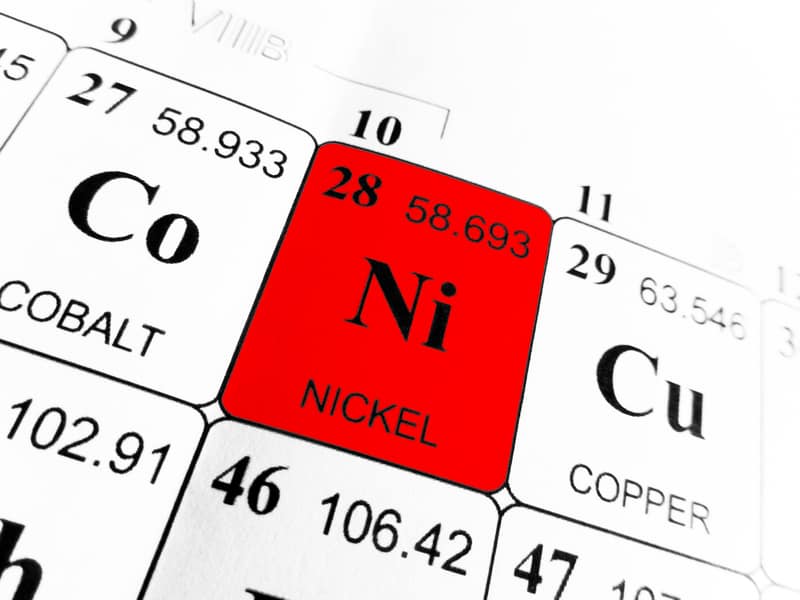“This post contains affiliate links, and I will be compensated if you make a purchase after clicking on my links.”
Nickel is a common alloying element and therefore is welded as part of different steel alloys. The question is now, can you weld Nickel as a base alloy. And what do you have to keep in mind when welding nickel-based or Nickel rich materials.
Generally, welding Nickel can be done with most welding processes. Hot cracking and porosity are the main challenges when welding Nickel.
If you are interested in the details, keep on reading my 11 tips to improve your Nickel welding or to get you started.
Understanding Nickel and It’s Main Properties
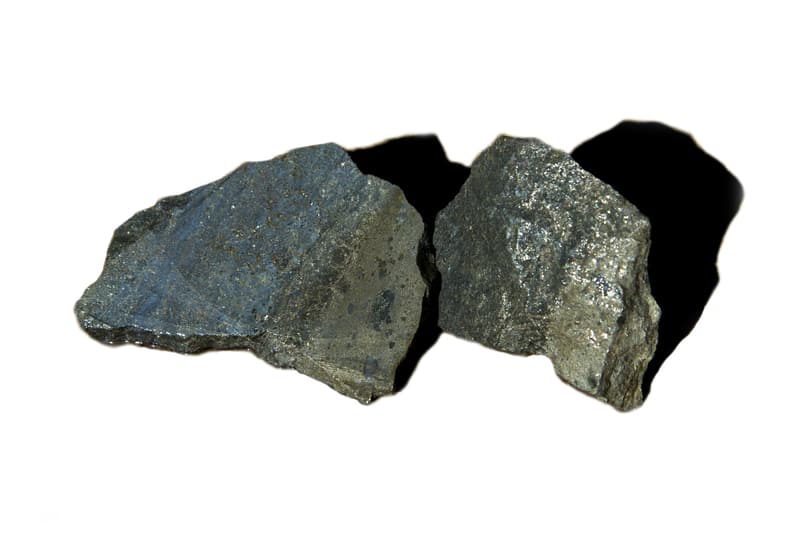
Welding of nickel needs a little grasp on the behavior of the metal when exposed to various conditions such as temperature. As one of the important engineering materials, nickel behavior is predetermined or influenced by its properties as described below.
- High resistance to scaling and oxidation. Even when exposed to red hot temperatures, nickel doesn’t undergo oxidation or scaling.
- Low conductivity. Nickel and nickel alloys have low conductivity. When an electric current is passed through the nickel alloy, they tend to turn red hot within a short time due to the low conductivity and low heat dissipation.
- High corrosion resistance meaning nickel alloys do not necessarily rust. Nickel alloys are even corrosion resistant to some alkaline and acidic solutions.
The other fascinating facts about nickel are that it is number five in terms of the most abundant element on earth and it’s also ferromagnetic meaning it can be attracted to a magnet. More so, nickel doesn’t experience phase transition when cooling from melting point to room temperature.
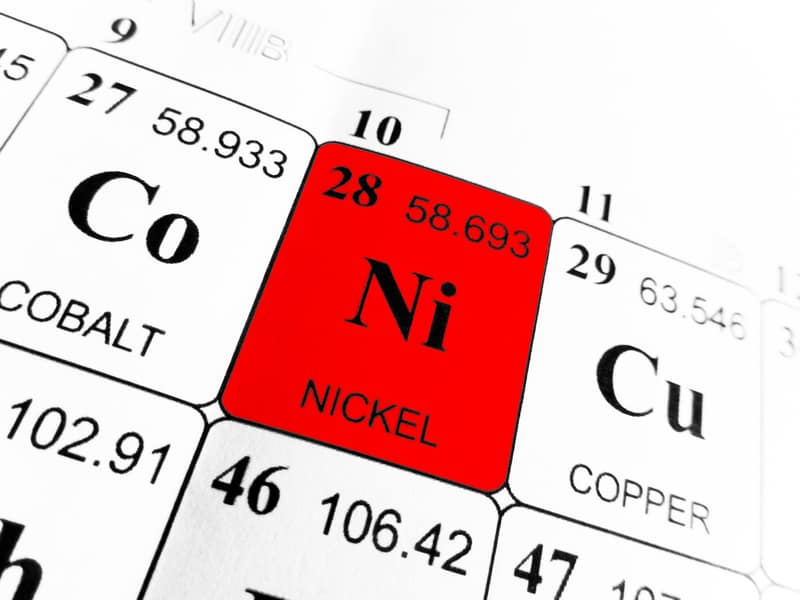
It’s worthy to note that nickel can exist in its pure form but is mostly combined with other compounds to form alloys by either precipitation hardening or solid solution strengthening. All these aspects paint the bigger picture on how nickel should be welded and what to expect.
Nickel Can Be Welded With Most Welding Processes
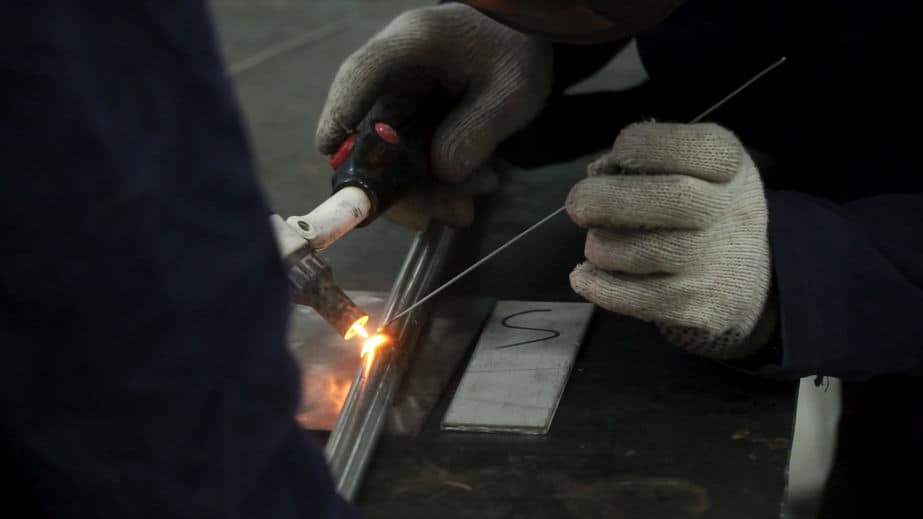
Back to tips for welding nickel, it is possible to weld nickel alongside its alloy using all convectional welding processes such as TIG, MIG, submerged arc welding, plasma welding, electroslag welding and Stick welding. However, stick welding is known to create a stronger weld as compared to the base material. Argon gas shielding is necessary when welding nickel alloys using the TIG process. A thoriated 2% tungsten electrode is recommended for TIG welding of nickel alloys.
MIG welding process for nickel requires gas shielding, usually argon and helium mixed at a 50:50 ratio. With this, it is possible to weld nickel in any position. The fact that nickel has almost the same but low coefficient of thermal expansion compared to that of carbon steel, distortion and distortion control measures are necessary.
Beware Of The Challenges When Welding Nickel
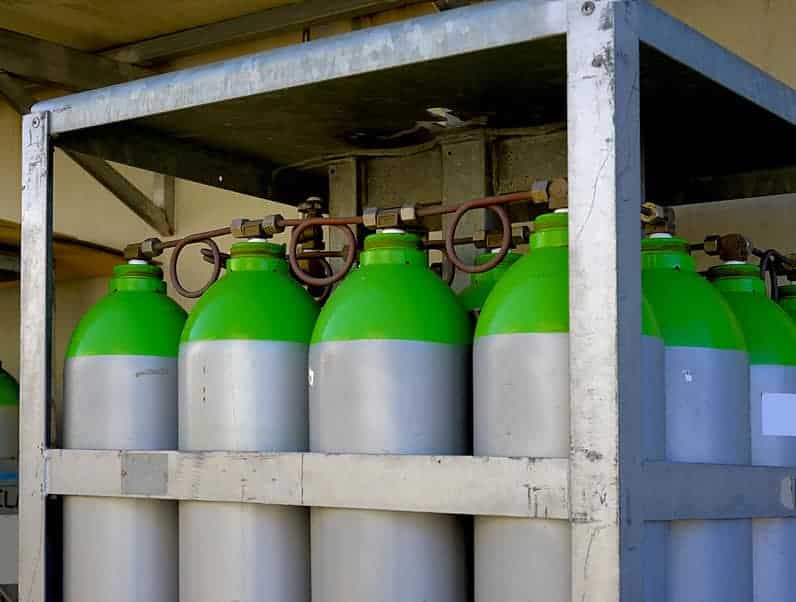
Hot cracking becomes a serious concern during the welding of nickel alloys. Such a scenario is evident at the weld metal or near the fusion line within the heat-affected zone. It is most common near the fusion line. Nevertheless, hot cracking during welding of nickel can also be necessitated by the presence of other materials such as oil, grease, or dirt as a result of improper cleaning of the materials.
Another problem associated with the welding of nickel alloys is porosity. The major cause is the existence of nitrogen that form pores on the final solidifying weld. The presence of nitrogen as little as 0.025% is capable of disrupting the gas shield resulting in atmospheric contamination and eventually causing porosity.
To avoid nitrogen-associated porosity, the weld area needs to be protected sufficiently with a gas shield that is both efficient and of high purity. The addition of hydrogen to argon shield gas has proved viable in reducing porosity in the weld metal. The resulting surface tension on the weld pool can also be reduced through the addition of hydrogen to the shield gas.
A combination of oxygen with carbon can also cause porosity in the weld pool due to the formation of carbon monoxide. This is avoided by using consumables that have sufficient deoxidants in the filler metal such as titanium, manganese, and aluminum.
An adherent and viscous scum can also be formed on the surface of the weld pool when welding nickel alloys. Failure to remove such before the next pass can prove difficult to remove which causes inclusions and poor inter-run fusion of the weld. Welders should be aware that wire brushing does not solve this problem.
Controlling the Weld Pool
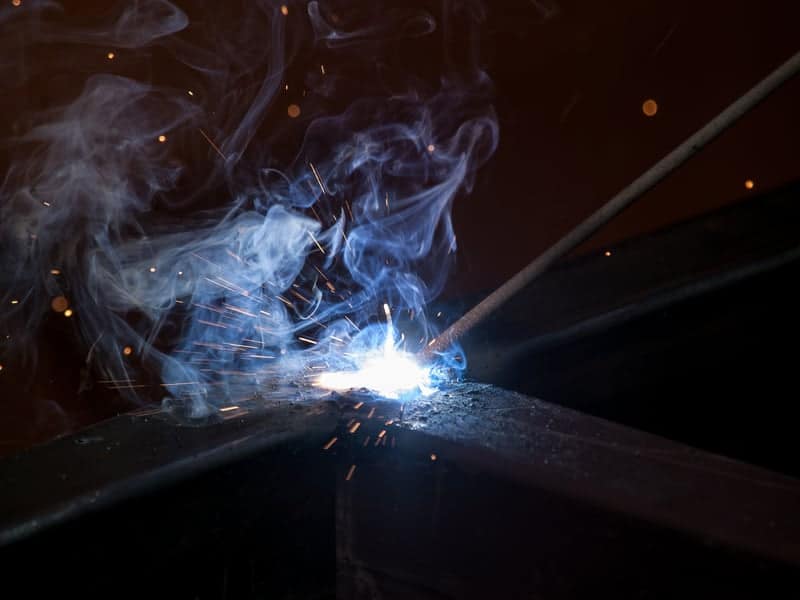
Directing and controlling the weld pool is important and thus weld preparations should be wide enough to allow this. A 70-80 degree included angle can accomplish this for V-butt welds. A 30-40 degree included angle is sufficient for a U-butt preparation.
Nickel alloys are known for having a low penetration as compared to stainless steel. It is thus necessary to limit the root face to 1.5 mm for a zero-gap butt weld in TIG welding. The root bead shape can be controlled using removable backing strips preferably made from stainless steel or copper alloy. One should avoid using carbon steel as the backing strips.
Using Flux
Welding of nickel alloy does not necessarily require flux. However, some alloys such as Inconel might necessitate the usage of flux. In that case, a thin paste of flux can be prepared by mixing water with dry flux. Whenever required, flux can be applied using a swab or brush on both sides of the seam, bottom and top, and also on the welding rod.
Choosing the Right Welding Filler Material
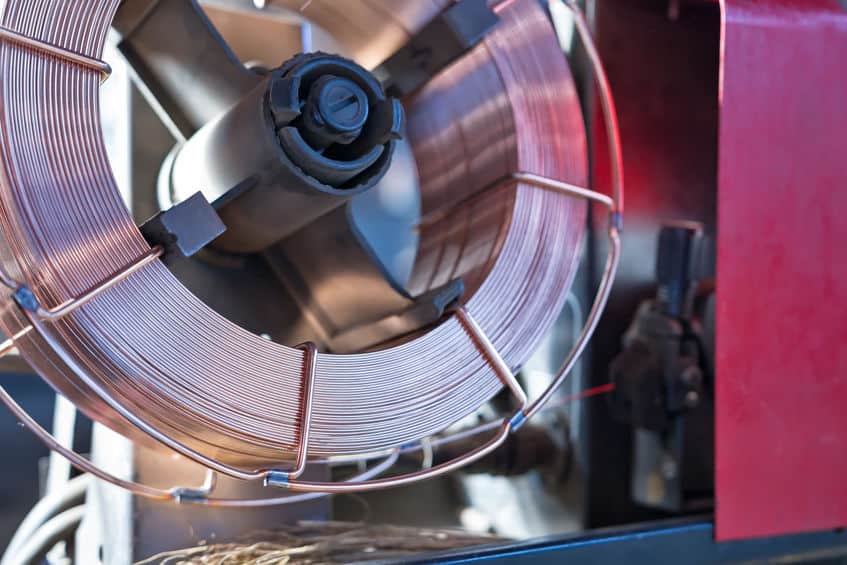
Welding rods for welding of nickel alloy need to have the same composition as the material being welded. This is because it ensures the final weld has uniform corrosion resistance as the material being welded without necessarily producing galvanic effects. Some of the preferable welding rods for nickel include silicon Monel rod and HTS-528 brazing rod. The latter is useful in joining two nickel metals or joining it to other metals like brass, copper, iron, bronze, and steel.
Thorough Preparation Before Welding
Just like welding other metals, cleaning the material is important. Any dirt, paint, oil, cutting fluid, grease, marker, and crayon inks should be thoroughly removed. Cleaning prior to welding can be done by either brushing vigorously using a stainless steel wire brush or machining. Other cleaning mechanisms for nickel include grinding, sandblasting pickling, and rubbing with an aid of an abrasive cloth.
This is followed by degreasing which can be accomplished with a suitable solvent and the actual welding ought to be done within a span of 8 hours for the avoidance of contamination. After degreasing is done, one should avoid using air-powered tools for compressed air as it might contain oil and moisture that eventually re-contaminate the surface.
Deciding On The Necessity of Heat Treatment
It’s possible to do a heat treatment on the part before welding. However, caution should be taken to ensure that it’s done with a Sulphur-free fuel. An electric furnace can be useful in that case. The presence of Sulphur among other contaminants such as phosphorus, lead, zinc, silver, tin, and other elements having a low melting is associated with the hot cracking phenomenon.
Setting Up the Weld Process Correctly
While welding, it’s recommended to use a slightly reducing flame. Acetylene and oxygen regulators are occasioned with pressure fluctuation. Therefore, reducing the flame should cater for the fluctuation and prevent any likely oxidation from the frame. Another important step while welding is to hold the parts being welded firmly. This can be done with the help of clamps or jigs in a bid to prevent any likely distortion.
Upon starting the welding process, the torch should not be removed from the work. The welder should continue along the seam. The welding rod end should remain within the protecting frame envelope. This prevents the heated rod from oxidation. In order to realize concentrated heat, it is necessary to maintain contact between the molten pool surface with the luminous cone tip. Maintaining the contact is also advantageous as it prevents the molten metal from oxidation.
In some instances, there is a possibility for the formation of slag or oxide on the molten metal surface while welding nickel. In that case, the welding rod needs to be carefully melted below the surface film into the weld.
Following the Best Practice For Welding Nickel
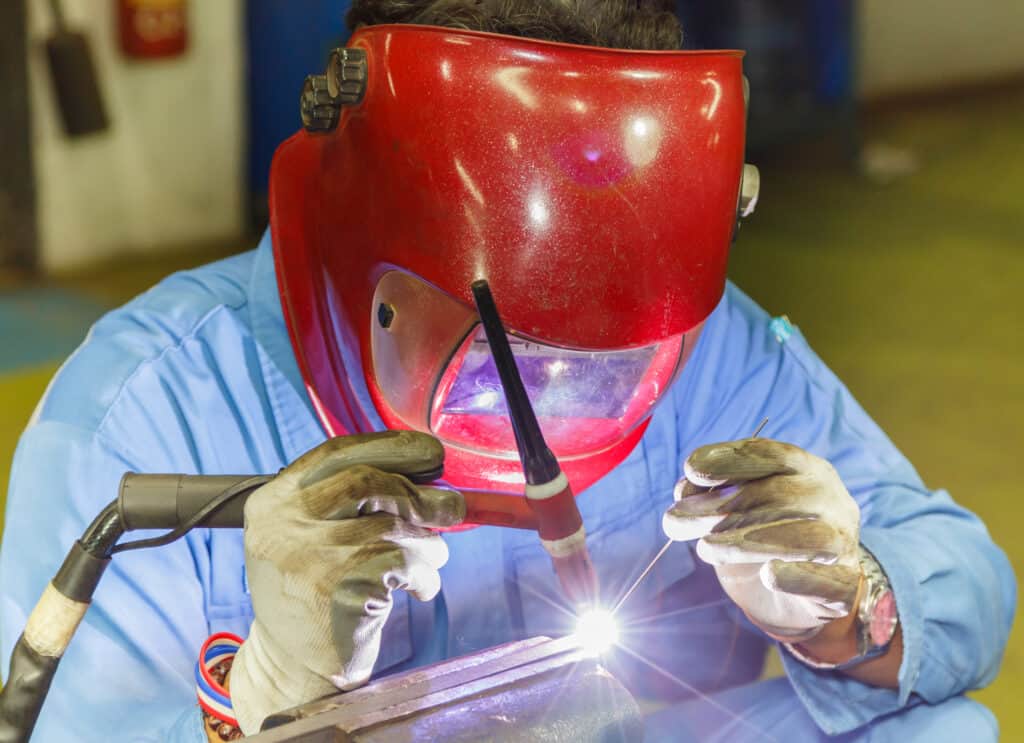
With all the discussed tips for welding nickel and its alloys, we can further narrow down to quick facts and tricks necessary for proper welding outcomes as bulleted below.
- Regardless of the welding process chosen, it is important to always limit the heat input.
- Due to the low thermal conductivity of nickel alloys, there is a likelihood for heat to build up quickly.
- Either helium or argon is the preferred gas shield for nickel alloys. A mixture of the two can still work properly. The addition of other gasses like oxygen can cause porosity in the weld.
- The amperage used in the welding of nickel alloy should remain less than that used in stainless steel.
- The weld should be allowed to cool between beads or passes.
- The surface should be cleaned before welding nickel and also between passes.
- Nickel doesn’t harden from quick cooling. This means that rapid cooling of the molten weld doesn’t necessarily harden the alloy. However, age hardening can be used to harden nickel alloys through heat treatment.
- An oversize cup or gas lens can be useful in TIG welding as it helps in providing a sufficient shield.
- The backside should also be shielded with argon for both full penetration and root passes welds.
- For the avoidance of oxidation, the hot tip of the filler wire should always be shielded. Any crapped-up tip needs to be sniped.
- After welding, post-weld treatment is not required unless necessitated by application of the welded material.
As indicated earlier, nickel alloys rarely have metallurgical changes that would impact their corrosion resistance. However, there is a need to stress relieve them after welding whenever they are likely to come into contact with compounds such as mercury salts, concentrated caustic soda, and fluorosilicates. This avoids stress corrosion cracking. That being said, it is not necessary to stress relieve nickel alloys that have a high content of nickel.
References
Avery, R. E. (2018). Guidelines for the welded fabrication of nickel alloys for corrosion-resistant service: A practical guide for welders, material engineers and design engineers. Nickel Institute.
Grill, J. (2020). Guide to Nickel Welding and Soldering. WeldGuru. Retrieved from: www.weldguru.com/nickel-welding/
Lippold, J. C., Kiser, S. D., & DuPont, J. N. (2013). Welding metallurgy and weldability of nickel-base alloys. Hoboken, N.J: Wiley.
Neonickel. Technical resources: Welding of Nickel Alloys. Retrieved from; www.neonickel.com/technical-resources/fabrication/welding-nickel-alloys/

